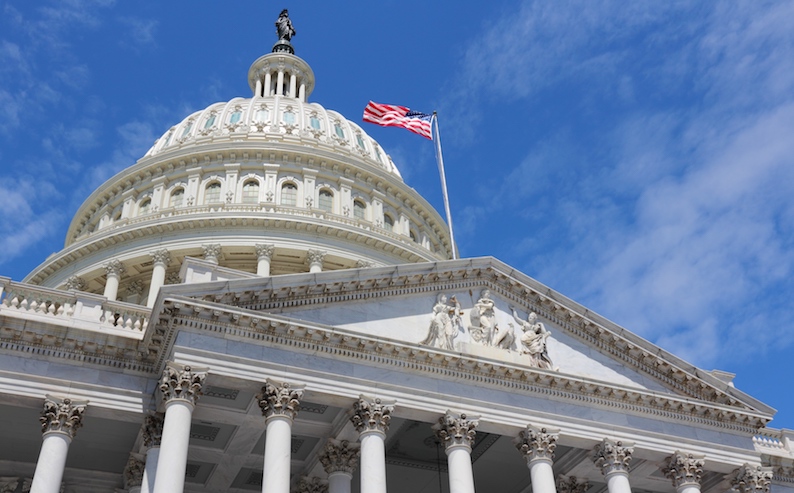
Precise statutory language corresponds to better benefit-cost analysis and more consistent judicial review.
A common phenomenon in partisan politics is the periodic realignment of the parties’ positions as their electoral successes ebb and flow. For example, many conservatives who once decried the muscular interpretation of executive power taken by the Obama Administration have failed to raise similar objections to the equally aggressive approach pursued by President Donald J. Trump. And some liberals who once sought to centralize power in Washington have increasingly come to appreciate the virtues of federalism in a national government largely controlled by the Republican Party.
Interestingly, one thing that has remained fairly consistent in the last decade or so is the parties’ respective positions on regulatory reform. Over the course of the Obama Administration, Republican legislators introduced hundreds of bills designed to rein in the power of executive agencies through enhancing oversight by the President, U.S. Congress, and the courts. Following President Trump’s victory in 2016, Republican legislators largely reintroduced the same legislation in the 115th Congress, notwithstanding the fact that doing so would have complicated the Administration’s deregulatory agenda by injecting additional procedural steps into the rulemaking process.
A key element throughout many of these recent legislative proposals for regulatory reform has been enhanced judicial review of agency rulemaking. And among judicial review enhancements, one of the most popular ideas would explicitly allow federal courts to review the regulatory impact analyses (RIAs) by which agencies assess the economic benefits and costs of an array of regulatory alternatives before settling on a regulatory intervention. For instance, the Regulatory Accountability Act, which offers the most comprehensive suite of reforms, would require agencies to analyze the problem they seek to solve and assess the benefits and costs for a range of regulatory alternatives. Courts could review this analysis as part of the overall rulemaking record.
Congress has yet to enact such a cross-cutting economic analysis requirement—although efforts to try to do so date at least to 1981—but Congress has adopted numerous statutes that direct agencies to perform some analysis of regulatory benefits and costs in specific regulatory programs. In so doing, Congress has used a wide array of verbal formulations, including requirements that agencies adopt specific regulatory alternatives (e.g., the “least burdensome” option), analyze an enumerated list of economic benefits and costs, simply “consider” the overall costs or benefits of the proposed rule, or select an option that is either “technologically” or “economically feasible.” And courts have interpreted portions of the Clean Air Act to prohibit the Environmental Protection Agency from considering a new rule’s expected costs when establishing air quality standards.
As Congress continues to debate whether to provide for judicial review of agency economic analysis, and how any such requirement could be phrased, it is critical to consider how the courts and agencies have interpreted such language in the past. In a new article, we do precisely that. Specifically, we identify the verbal formulations used in statutory economic analysis requirements reviewed by the federal courts of appeals over the last 30 years. We then assess both how thoroughly agencies conduct RIAs under each such formulation and how rigorously courts have reviewed agency regulations promulgated under the same formulations.
Our econometric analysis investigated whether the quality of an agency’s economic analysis of proposed regulations correlated either with statutory considerations requiring or prohibiting various kinds of economic analysis or prior court cases evaluating the agency’s economic analysis for a similar rule issued under the same or a predecessor statute.
We found that regulations issued under relatively specific statutory requirements to conduct some form of economic analysis tended to have better analysis and more extensive explanations of how the agency claimed to use the analysis in decisions.
Regulations issued under a statutory requirement for a non-economic form of analysis—technological feasibility—were accompanied by less extensive economic analysis and less extensive explanations of how net benefits factored into the decisions.
A prohibition on considering costs, meanwhile, was associated with less thorough analysis of costs and less thorough explanations of how the analysis affected decisions. But a prohibition on considering costs was associated with a better analysis of the systemic problem and benefits.
Finally, a prior appeals court evaluation of a similar regulation issued under the same or a predecessor statute was associated with better economic analysis.
Separately, we analyzed federal appeals court decisions reviewing regulations to assess whether the rigor of these decisions appears to correspond with statutory language about costs and benefits. When statutory language is more specific about the benefits and costs agencies must consider or the criteria for choice among alternatives, appeals courts tend to parse agency analysis carefully. Statutory silence is accompanied by a much more deferential standard of review.
Intermediate statutory language (e.g., a benefit-cost “consideration” or feasibility analysis requirement) is associated with a wide array of results, ranging from very searching judicial review to virtually per se deference. Interestingly, in these intermediate ranges, precisely the same statutory standard can correlate with either very searching or very lax judicial review, depending upon the panel of judges deciding the case.
The widely varying standards of judicial review for the intermediate cases likely create significant uncertainty for agencies and regulated entities alike. And the number of these intermediate cases is far from trivial. Twenty-three of the 33 appeals court cases we analyzed were issued under statutes that either required agencies to consider benefits or costs in some indeterminate way or assess the economic feasibility of the rule. Approximately one-third of the 130 economically significant prescriptive regulations proposed between 2008 and 2013 were issued under these types of statutes.
Correlation need not imply causation. However, the correlations we identify in our study are highly consistent with the theory that statutory language and judicial review of agency economic analysis affect agency behavior.
The key takeaway is that verbal precision seems to matter. Explicit mandates to adopt certain alternatives or consider specific benefits or costs appear to produce relatively sophisticated agency economic analyses and rigorous judicial review, whereas open-ended mandates tend to yield lower quality agency economic analysis and very forgiving judicial review.
Importantly, compromise efforts to split the difference by adopting an imprecise standard, such as a benefit-cost consideration requirement or an economic feasibility mandate, tend to correlate with outcomes that are unsatisfactory to both sides. Some courts take such standards as an invitation to carefully parse the record, others do not, and agencies tend to produce less thorough analyses than when statutory language is more specific.
If the left and right can agree on nothing else, they should at least agree on the value of consistency. To avoid the inconsistent judicial review that our paper documents, any statute dealing with economic analysis requirements should be specific about what Congress does, or does not, want agencies to do.





